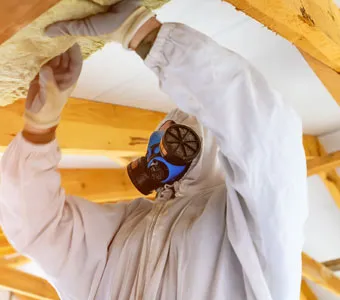Asbestos and the Medical Risks of Exposure
Asbestos and the Medical Risks of Exposure
In what was deemed a “preventative measure,” the Charlotte-Mecklenburg School District (CMS) recently had asbestos-containing ceiling tiles removed from one of its elementary schools.
Over the 2011 Thanksgiving break, abatement professionals were scheduled to remove approximately 3,600 square feet of asbestos-containing ceiling tiles from Nations Ford Elementary, according to WSOC in Charlotte. CMS district officials and local environmental officials said there was not a reason for alarm, that CMS was removing the ceiling tiles as a way to prevent a “future hazard.”
WSOC quoted Brian Kasher, Environmental Health and Safety Director, as saying, “It’s not a hazard today, but there’s a potential for hazard in the future. That’s what we’re eliminating.”
While CMS said that notification of the asbestos removal was sent to parents, when news of the removal broke, many parents had yet to be told of the situation, according to WSOC. Environmental Protection Agency (EPA) rules state that it’s the parents’ right to know if the school their children attend contains asbestos, and advanced notice of asbestos removal should be given by school districts, according to a Mesothelioma.com article.
Asbestos
Asbestos is a naturally occurring mineral fiber that was commonly used as insulation in construction projects and in a number of other products from the late 1800s through 1989 when new uses of the product were banned by the EPA. Mesothelioma.com states that because asbestos is very strong and resistant to heat and corrosive chemicals, it was used in a number of common products, including:
- Roofing felt
- Shingles
- Brake pads and linings
- Flooring tile
- Ceiling tile
- Sheetrock and wallboard
- Insulation
- Protective clothing such as aprons, gloves and leggings
- Cigarette filters
- Cement mixtures
- Paint
Danger of Asbestos
When intact, asbestos does not pose much risk to humans. However, when products that contain asbestos become damaged, the tiny asbestos particles become airborne and can be inhaled in by humans, which poses significant health risks.
The EPA and the United States Department of Health and Human Services (HHS) have classified asbestos as a carcinogen, because exposure to asbestos has been shown to increase the risk of developing lung cancer and mesothelioma, according to the National Cancer Institute.
Children and adults who are exposed to asbestos particles are at risk of developing lung cancer, mesothelioma and asbestosis:
- Lung cancer – This disease is responsible for the most asbestos-related fatalities, according to the EPA. Smokers who have been exposed to asbestos are at particularly high risk of developing lung cancer, as each contributes to the other’s carcinogenic effects, according to the Mayo Clinic.
- Mesothelioma – As the EPA notes, almost every case of mesothelioma is linked to asbestos exposure. A rare type of cancer, this disease attacks the membrane of the lung, chest, heart and abdomen. Mesothelioma has a long latency period and may not develop until several years after being exposed to asbestos.
- Asbestosis – This non-cancerous disease is the scarring of the lung tissue, which makes it difficult for oxygen to enter the blood stream. According to the Mayo Clinic, it may take people exposed to asbestos 20 to 30-years to develop symptoms of Asbestosis.
Occupational Risk
There are many occupations that put workers at risk of exposure to asbestos. The Agency for Toxic Substances and Disease Registry (ATSDR) lists the following jobs as having high risk of occupational exposure:
- Demolition workers
- Auto mechanics
- Boilermakers
- Carpenters
- Drywallers
- Iron workers
- Electricians
- Roofers
- Plumbers
- Longshoremen
- Paper mill workers
Many people who have not worked in a job that exposes them to asbestos still develop asbestos-related illnesses. Often, these people were married to or lived with someone who was exposed to asbestos. Asbestos particles can become trapped in or attach to workers’ clothing, and the asbestos particles may be inhaled by others, such as children, when this clothing is handled.
The latency period of many of the disease that can result from the exposure to asbestos are very long, upward of 15 to 40 years. Because of this delay, it may be extremely difficult to prove the source of your asbestos exposure. Legal counsel experienced in handling asbestos claims can help you investigate and narrow down the potential source of exposure and discover the parties responsible for your injuries.
If you have developed mesothelioma, asbestosis or lung cancer after being exposed to asbestos, talk to an attorney about your legal rights.







